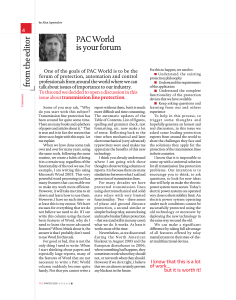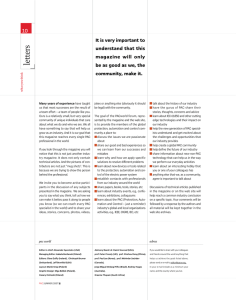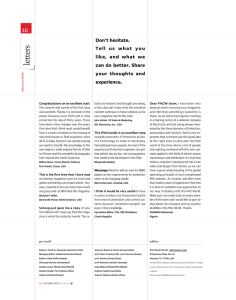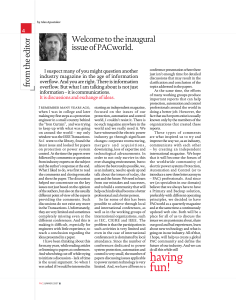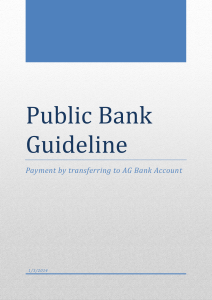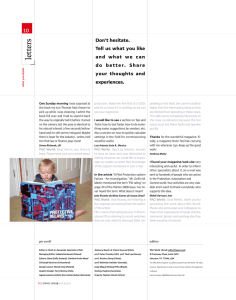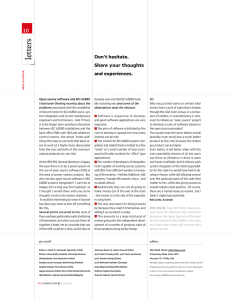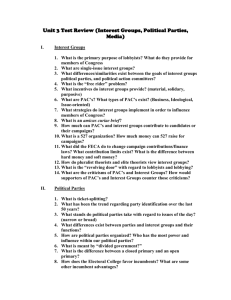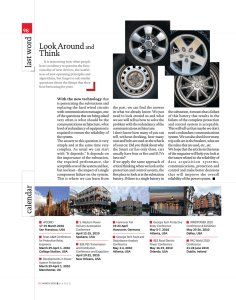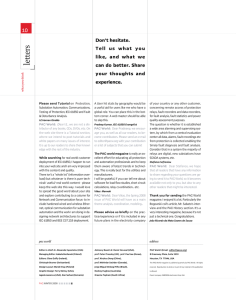or it ed e
advertisement
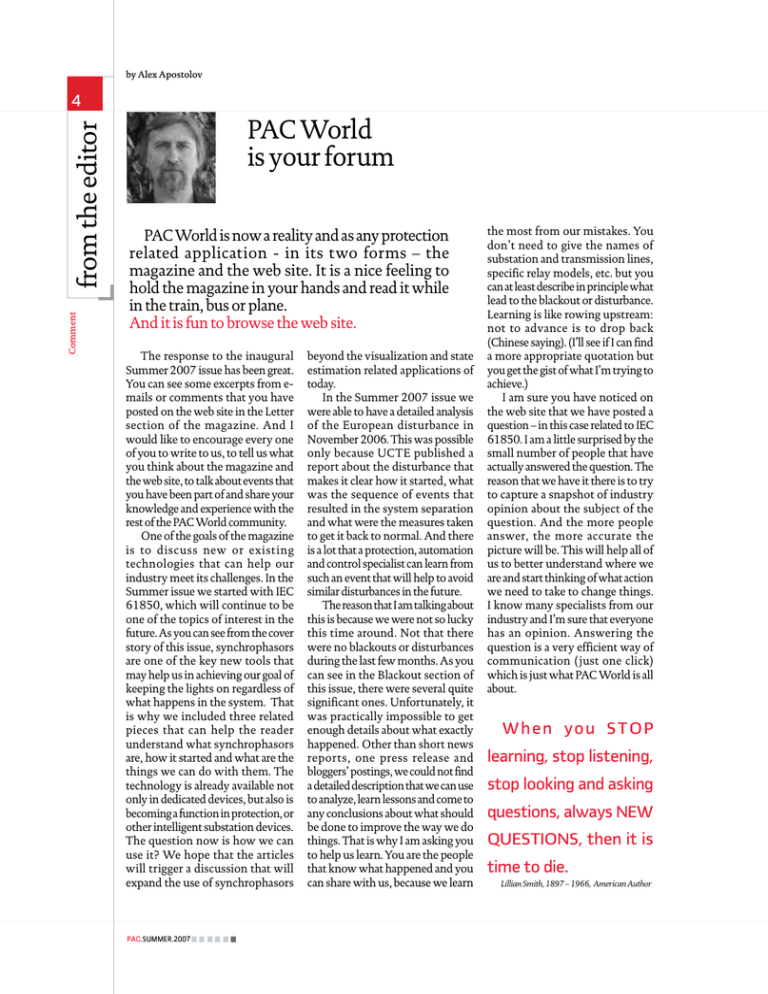
by Alex Apostolov Comment from the editor PAC World is your forum PAC World is now a reality and as any protection related application - in its two forms – the magazine and the web site. It is a nice feeling to hold the magazine in your hands and read it while in the train, bus or plane. And it is fun to browse the web site. The response to the inaugural Summer 2007 issue has been great. You can see some excerpts from emails or comments that you have posted on the web site in the Letter section of the magazine. And I would like to encourage every one of you to write to us, to tell us what you think about the magazine and the web site, to talk about events that you have been part of and share your knowledge and experience with the rest of the PAC World community. One of the goals of the magazine is to discuss new or existing technologies that can help our industry meet its challenges. In the Summer issue we started with IEC 61850, which will continue to be one of the topics of interest in the future. As you can see from the cover story of this issue, synchrophasors are one of the key new tools that may help us in achieving our goal of keeping the lights on regardless of what happens in the system. That is why we included three related pieces that can help the reader understand what synchrophasors are, how it started and what are the things we can do with them. The technology is already available not only in dedicated devices, but also is becoming a function in protection, or other intelligent substation devices. The question now is how we can use it? We hope that the articles will trigger a discussion that will expand the use of synchrophasors PAC.SUMMER.2007 beyond the visualization and state estimation related applications of today. In the Summer 2007 issue we were able to have a detailed analysis of the European disturbance in November 2006. This was possible only because UCTE published a report about the disturbance that makes it clear how it started, what was the sequence of events that resulted in the system separation and what were the measures taken to get it back to normal. And there is a lot that a protection, automation and control specialist can learn from such an event that will help to avoid similar disturbances in the future. The reason that I am talking about this is because we were not so lucky this time around. Not that there were no blackouts or disturbances during the last few months. As you can see in the Blackout section of this issue, there were several quite significant ones. Unfortunately, it was practically impossible to get enough details about what exactly happened. Other than short news reports, one press release and bloggers’ postings, we could not find a detailed description that we can use to analyze, learn lessons and come to any conclusions about what should be done to improve the way we do things. That is why I am asking you to help us learn. You are the people that know what happened and you can share with us, because we learn the most from our mistakes. You don’t need to give the names of substation and transmission lines, specific relay models, etc. but you can at least describe in principle what lead to the blackout or disturbance. Learning is like rowing upstream: not to advance is to drop back (Chinese saying). (I’ll see if I can find a more appropriate quotation but you get the gist of what I’m trying to achieve.) I am sure you have noticed on the web site that we have posted a question – in this case related to IEC 61850. I am a little surprised by the small number of people that have actually answered the question. The reason that we have it there is to try to capture a snapshot of industry opinion about the subject of the question. And the more people answer, the more accurate the picture will be. This will help all of us to better understand where we are and start thinking of what action we need to take to change things. I know many specialists from our industry and I’m sure that everyone has an opinion. Answering the question is a very efficient way of communication (just one click) which is just what PAC World is all about. When you STOP learning, stop listening, stop looking and asking questions, always NEW QUESTIONS, then it is time to die. Lillian Smith, 1897 – 1966, American Author
